Even today, customers prefer speaking to a live agent over talking to chatbots. These calls can make or break brands because of how integral they’re to the overall customer experience.
That’s why support agents must be equipped with the right tools, like computer telephony integration, to handle customer calls efficiently.
Computer telephony integration is any technology that allows interaction between a computer and a telephone.
In this article, we’ll explore what computer telephony integration is, its features, and its benefits. We’ll also highlight the five best computer telephony software to manage your call center or contact center operations effortlessly.
This article contains:
(Click on a link below to jump to a specific section)
- What is Computer Telephony Integration?
- 6 Key Features of Computer Telephony Integration
- 6 Major Benefits of Computer Telephony Integration
- 5 Best Computer Telephony Software
Let’s get started.
What is computer telephony integration?
Computer Telephony Integration (CTI) is any technology that enables a computer to interact with a telephone.
Such phone system integrations use the VoIP (Voice over Internet Protocol) technology that allows voice and other types of communication to travel over the internet.
Telephony integration is primarily used in call centers to link a phone system to their business software. This way, it enables agents to have desktop-based interactions with the customers.
Agents can receive incoming calls, make outgoing calls, and even complete other call-related tasks directly from a laptop, desktop, or mobile device. They no longer need a physical telephone device as they can perform all phone related functions using on-screen call controls.
Moreover, as call centers evolve into contact centers, the term CTI has also expanded to include different customer service channels like email, live chat, and social media.
Now that we have a basic understanding of computer telephony integration, let’s explore more about this technology.
6 key features of computer telephony integration
Here are some of the functions of CTI:
1. Phone controls
CTI software offers phone control features like answer, hold, mute, call forwarding, conference, and hang-up.
This way, a call center agent doesn’t need to switch back and forth between the computer software and a physical phone to handle calls.
Not only does this prevent distractions for the agent, but it also ensures better call management and focus over the entire customer interaction.
2. Automated screen pop-ups
One of the essential features of computer telephony integration is screen pop-ups or screen pops.
It’s a window that automatically appears on the agent’s desktop when a customer calls. This window displays complete information about the caller whose call is directed to that agent’s phone.
The screen pop feature in a CTI application can search through the software and display information needed to resolve a customer issue.
This information includes caller authentication via Automatic Number Identification (ANI) or Dialed Number Identification Service (DNIS). It also shows calling history and other customer data.
With instant access to such information, agents can deliver a more personalized service. It also makes them more efficient as they don’t need to toggle between apps to look for customer data.
3. Automated dialing
A CTI tool offers automated dialing features that include:
- Click-to-call.
- Predictive dialing.
- Auto dialers.
With a click-to-call service, customers can connect with a call center representative via phone while using an app or browsing a website.
On the other hand, agents can use predictive dialing or auto dialers to call a list of phone numbers automatically. When the software detects a connection, it passes the call to a live agent.
How do these features help?
They allow call center agents to connect with more customers in a shorter period. It boosts employee productivity and helps meet targets faster.
4. Call routing/transferring
Computer telephony integration can offer data-directed call routing and transferring using an Automatic Call Distributor (ACD).
This means it can match data collected from inbound calls with a company’s database and then route it to the agent best skilled to handle the customer’s inquiry.
So, if a Spanish-speaking customer calls, the software can search for an agent proficient in speaking the language and automatically route the call.
Since a call center receives bulk calls every day, this helps resolve customer complaints more quickly.
5. CRM integration
A CTI system facilitates integration with your CRM system (Customer Relationship Management). This means you can access all customer information right from your CRM dashboard.
You can also integrate it with a contact center platform, unified communications, or a VoIP PBX phone system.
With such integrations, agents get the essential caller details on their CTI screen, including the historical data about the previous interactions.
For example, let’s say a customer calls to enquire about a delayed refund. In this case, the agent already has details about the purchased item, date of purchase, date of return, the last call received, the status of the refund, etc.
This way, call center or contact center agents can serve each customer better and resolve their issues accurately.
6. Call recording and analytics
You can use a CTI tool to record and listen to calls right from the CTI screen.
This allows agents to go through the previous customer interactions and understand their issues better. It also helps them deliver more personalized solutions to the customer in the future.
Moreover, team leads can use this feature to give feedback to agents and help them improve their call-taking skills.
Still not sure if you need computer telephony integration?
Understanding the advantages of using this technology can help you decide.
6 key benefits of computer telephony integration
Here’s why you should use computer telephony integration:
1. Reduces costs
Computer telephony integration completely eliminates the need for a physical phone, which reduces its cost and maintenance.
CTI integration also helps agents reduce their average call handle time. It means they can take more calls in the same duration without compromising customer satisfaction.
Since a significant chunk of the call center’s running cost is spent on the workforce, telephony integration makes agents more efficient and reduces company overheads.
Moreover, as CTI helps improve workflows, it keeps agents at ease and can reduce employee turnover. This can dramatically reduce the costs of hiring and training over the long run.
2. Saves time
With telephony integration, agents can drastically reduce the time spent searching customer data, toggling between screens, and post-call wrap-ups.
Since CTI combines all the information in a unified dashboard, agents can easily access all the essential information.
Additionally, functions like click-to-call can reduce the time spent by agents dialing each number manually. This especially comes in handy when agents are working in a high call volume environment.
3. Improves customer satisfaction
As the CTI technology equips agents with a complete customer record, they can quickly authenticate a caller by matching the phone number with the call center database.
So when an angry customer calls, they don’t need to repeat themselves and provide all the information to the agent from scratch.
Moreover, with screen pop-ups, agents can have a customer record displayed in seconds, even before answering a call. They can greet customers by their names and don’t need to put customers on hold.
This telephony technology also greatly improves customer service because agents can provide tailor-made solutions and deals to clients based on their preferences.
Additionally, the skill-based routing helps transfer calls to the most suitable agent, which further helps in improving customer satisfaction.
4. Ensures smarter monitoring and performance tracking
CTI screens offer a unified dashboard to view how many calls are on hold, which agent is on the phone, and everything else that team leads require to monitor the workforce.
Telephony integration can also give managers a detailed analysis of customer journeys through call logging and recording. All calls are logged automatically in real-time, along with the necessary call data.
The CTI application then generates multiple reports based on this information. Managers can use these reports to measure agent performance and target Key Performance Indicators (KPIs.)
5. Offers remote work capability and scalability
CTI telephony technology makes it possible to set up a remote call center with teams distributed worldwide.
The software automatically distributes and routes calls to agents based on their skill-sets.
With a CTI system, managers can easily add or remove agents from their teams. They can also quickly scale up a call center business to handle larger call volumes.
6. Facilitates agent training
Telephony features like call recording, call whispering, and call monitoring can help managers guide and train new agents.
They can also use call recordings to identify potential disputes with a customer and take corrective actions for future calls.
Surely, telephony integration can go a long way in improving agent experience and increasing customer satisfaction.
Want to give this technology a try?
Let’s find out which are the best computer telephony software in the market.
5 best computer telephony software
Here are the top five CTI software that you can use in your customer service call center:
1. Aircall
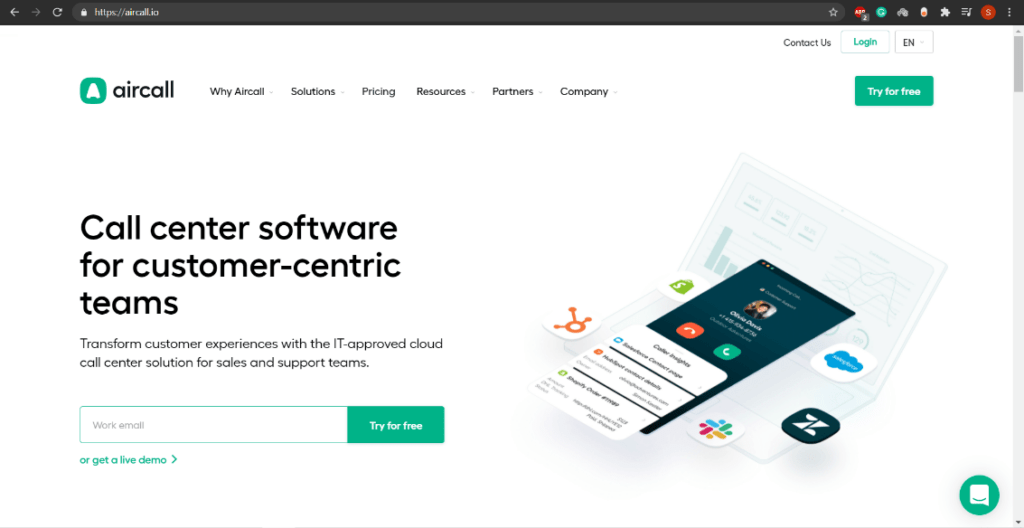
Aircall’s computer telephony integration allows you to handle all call-related tasks from your devices with a single unified dashboard.
This CTI application gives you access to all critical customer information while handling incoming calls. You can also use tags for your team to ensure smooth follow-ups.
Moreover, its powerful integration with popular CRM tools like Salesforce, HubSpot, etc., can give you data insights and help you monitor team productivity.
Key features
- Displays screen pop-ups with necessary customer details.
- Supports time-based routing to direct calls only to available agents.
- Offers call metrics like longer hold times, missed calls, etc.
- It offers custom filters to search through categorized calls.
Pricing
Aircall offers a 7-days free trial. The paid plans for this telephony integration tool start at $30/user per month.
Customer ratings
- G2: 4.3/5 (475+ reviews)
- Capterra: 4.3/5 (225+ reviews)
2. RingCentral
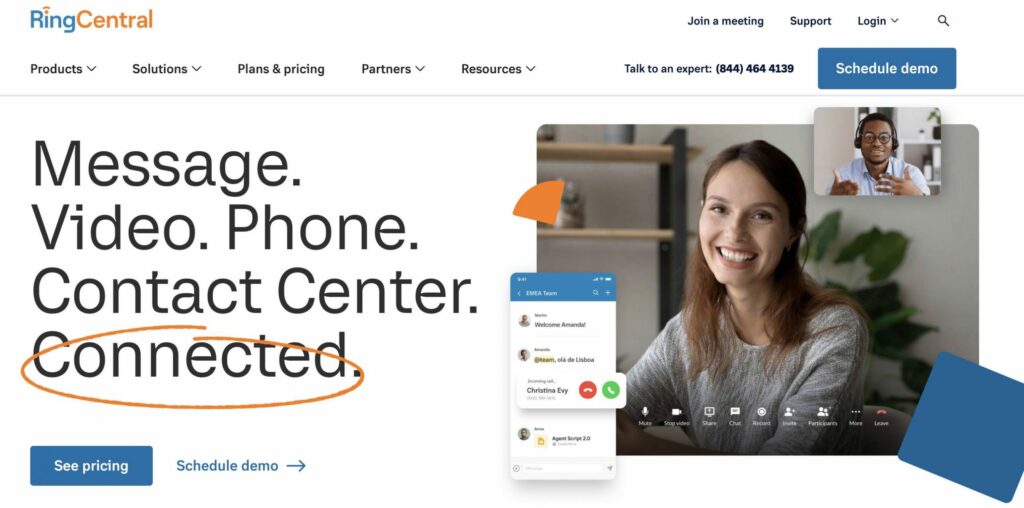
RingCentral is a cloud-based business communication solution. It offers a digital Application Program Interface (API) library for integrating your preferred CRM system.
With this CTI software, you can authenticate callers by matching inbound calls with your call center database. It also lets you add notifications, automate tasks, and integrate analytics for smoother business operations.
Moreover, its real-time reporting lets you manage your team better and optimize agent productivity.
Key features
- Offers skill-based routing with the help of Interactive Voice Response (IVR).
- Supports all forms of communication, like voicemail, fax, mobile, SMS, support tickets, live chat.
- Facilitates performance monitoring through call storage, logs, and recordings.
- Supports integration with popular CRM software like Salesforce, Zoho, Zendesk, etc.
Pricing
The paid plans for this computer telephony software start at $39.99/user per month.
Customer ratings
- G2: 3.9/5 (80+ reviews)
- Capterra: 4.3/5 (155+ reviews)
3. Ameyo
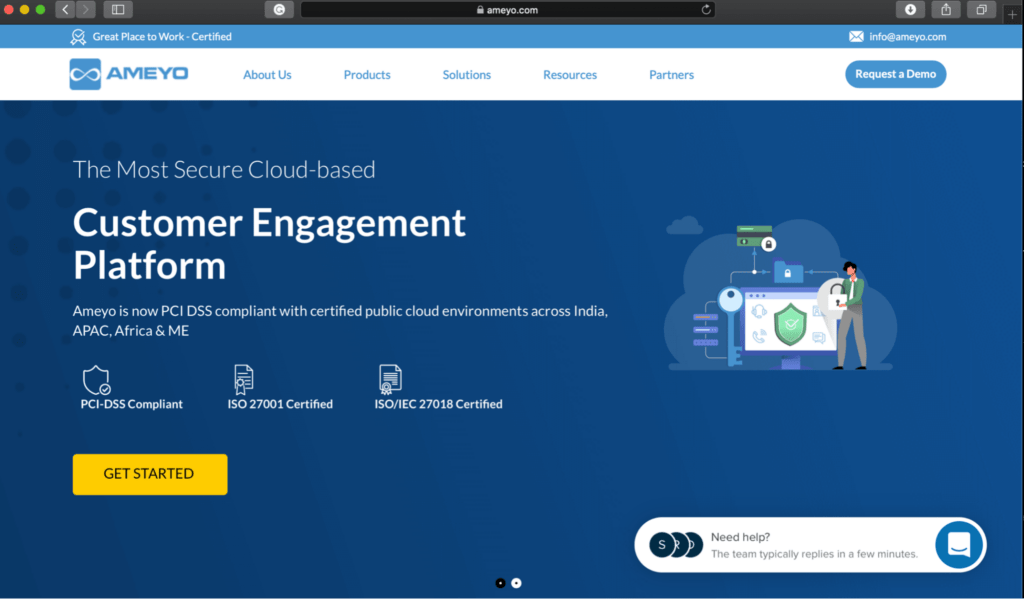
Ameyo is another contact center software that offers powerful telephony integration capabilities.
This CTI software offers screen pop-ups with details like caller’s name, company, photo, email ID, etc. This way, it helps agents have more contextual conversations.
Apart from CRM, Ameyo is compatible with popular Enterprise Resource Planning (ERP) solutions for better workforce management.
Key features
- Floating window to let agents access other data on their computers during live calls.
- Supports automatic caller identification using the CRM database.
- Offers functionalities like automatic call distributor (ACD) and interactive voice response (IVR) for self-service.
- Supports integration with CRM, helpdesk, database, and ticketing platforms.
Pricing
The pricing of this CTI software is available on request.
Customer ratings
- G2: 4.2/5 (65+ reviews)
- Capterra: 3.9/5 (30+ reviews)
4. Nice CXOne
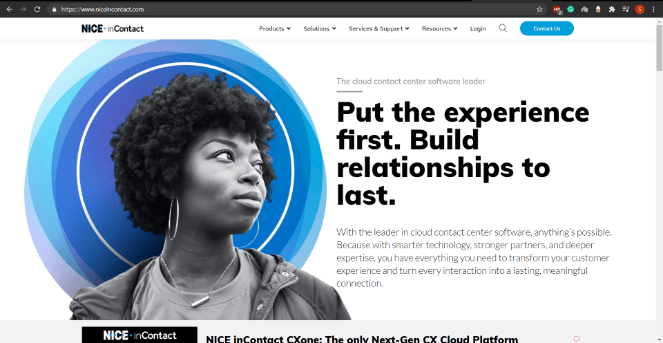
NiceCXOne is a popular cloud contact center software that you can use to interact with your customers via any channel. It supports inbound or outbound calls, email, voicemail, chat, social media, and more.
It offers essential call center features like interactive voice response, automated dialing, and computer telephony integration.
Moreover, this application uses automation and artificial intelligence to streamline call center operations.
Key features
- Its predictive dialing helps connect with prospective customers.
- Supports AI-based call routing to connect callers to the best-skilled agents.
- Offers interaction analytics to help train agents.
- Offers integration with tools like Salesforce, ServiceNow, Zendesk, etc.
Pricing
The pricing of this CTI tool is available on request.
Customer ratings
- G2: 4.3/5 (1250+ reviews)
- Capterra: 4.2/5 (505+ reviews)
5. InGenius
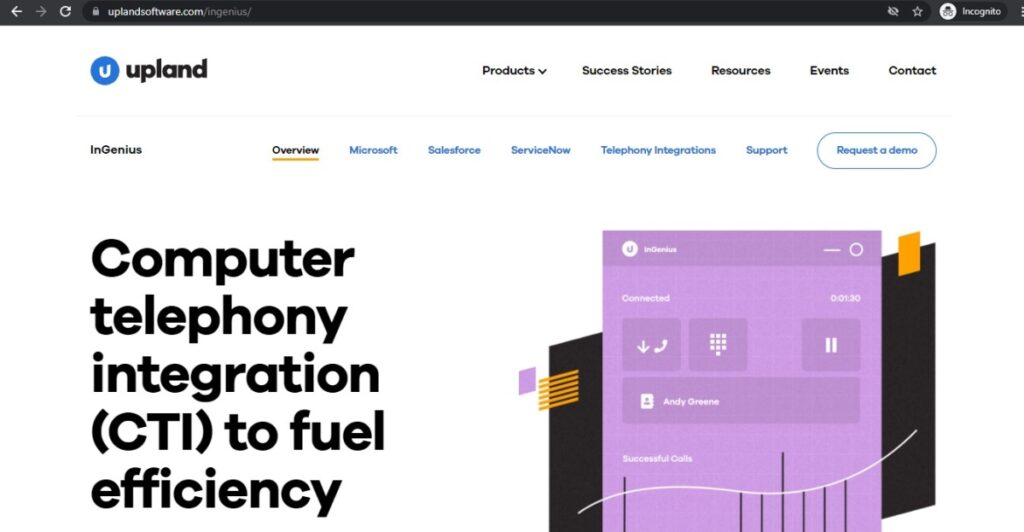
InGenius lets you use its CTI technology to integrate your CRM with an on-premise or hosted PBX (Private Branch eXchange) phone system.
Hosted PBX is a telephone system that you can access over a network in the cloud.
With this software, your agents can place, answer, and transfer telephone calls. You also get caller insights like successful calls made and calls that require follow-ups.
Key features
- Screen pops offer complete customer records.
- The ‘Click-to-dial’ telephone feature lets you make phone calls directly from any CRM record.
- Incoming and outgoing calls get logged automatically.
- Offers speed dials and search-and-dial functionality.
Pricing
The pricing of this CTI solution is available on request.
Customer ratings
- G2: 4.5/5 (5+ reviews)
- Capterra: N/A
In addition to the key features, you should also check if the tool you choose complies with the CTI interface standards.
Some of the popular standards adopted by vendors include JTAPI (Java Telephony API), TSAPI (Telephony Services API), and Microsoft’s TAPI (which mainly supports Windows applications).
Wrapping up
With computer telephony, the opportunities to increase customer experience and loyalty are endless. It can help streamline your support operations and distinguish you from your competitors.
Use the information we covered here to understand CTI and what features you need for your call center or contact center. And once you have the right CTI software, you’ll be able to provide a great customer experience to every caller.

Andy is a technology & marketing leader who has delivered award-winning and world-first experiences.


